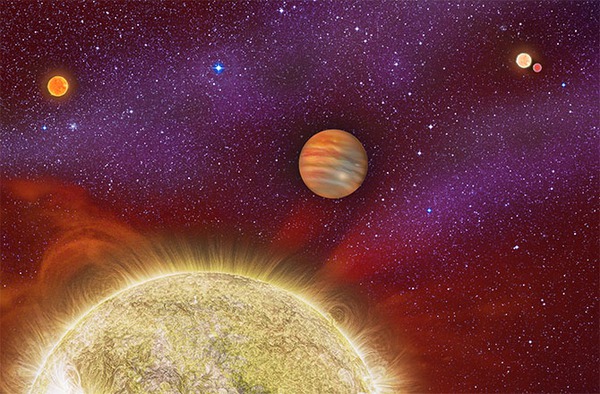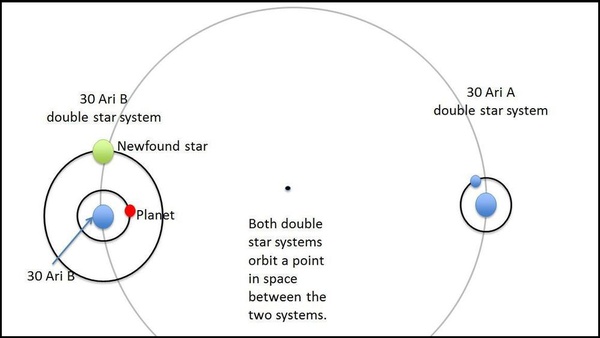Astronomers have discovered a new planet 125 light years from Earth with up to four suns.
Recently, observations obtained from the Palomar Observatory, San Diego, California, USA help experts to make a surprising discovery: a new planet in the universe is illuminated by 4 suns.
More precisely, this planet and its 4 suns are collectively referred to as 30 Ari. It is a 4-star system and a planet about 136 light years from Earth, with a distance from the main planet to the planet is 125 light years.
 The strange planet in the center of the frame has four different suns around it
The strange planet in the center of the frame has four different suns around it
The peculiarity of the planet above is that it is in the orbit of 4 different suns. This planet’s distance to the nearest Sun (called 30 Ari B) is also almost 30 times the distance from Earth to the Sun (nearly 4.4 billion km). The estimated time to rotate around 30 Ari B from the main planet is 355 days.
In terms of size, the 4-Sun planet is about 10 times the size of Jupiter but does not have a surface area for spacecraft to land. In fact, it was discovered a few years ago. However, at that time, astronomers could only see 3 suns around this planet.
 Diagram of the 30 Ari system provided by NASA
Diagram of the 30 Ari system provided by NASA
Until recently, with the application of the combined Robo-AO PALM-3000 observing system, the fourth Sun of the main planet was discovered. Thus, 30 Ari becomes the planetary system with the last 4 suns ever discovered in the universe. The first planet with a similar property, KIC 4862625, was discovered about 3 years ago.
The planetary system KIC 4862625 was discovered in 2012
Currently, scientists are continuing their research to decode this new planetary system. In particular, experts focus the most on the problem: why can a planet attracted to four different suns still be stable?


